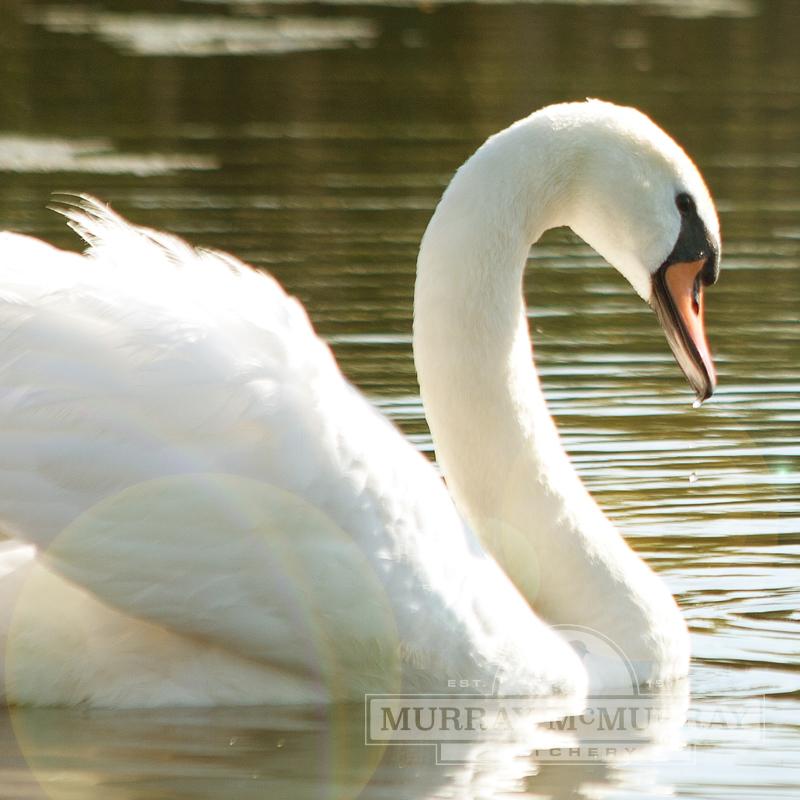
The White Mute Swan (Cygnus olor) is one of the most recognized of all of the swan varieties, featured in ballets and fairy tales for centuries. These large, all-white swans have an orange billl with a prominent black knob at its base. The Mute Swan is also known for its distinctive and graceful curved neck and downward bill as it swims.
The male Mute Swan (Cob) is frequently larger in size than the female (Pen), and its knob is more prominent. Immature Mute Swans' bills are a more pale pinkish-orange and will turn a brighter color when mature. Young Mute Swans (Cygnets) are usually white, but gray is not uncommon. Cygnets grow quickly, reaching nearly their adult size in just three months, but they won't feather out into their adult coloring until they are yearlings.
The White Mute Swan usually mates for life, and is often used as a symbol for love. Mute Swans are known to mourn if their partner dies. Eventually a single swan may will remate after their partner has died. During mating and breeding season, give plenty of space to these swans as they can become territorial and protective of their nest and young. Mute Swans mature at around 3 years of age, and are long-lived — living over 25 years according to some records.
Despite their name, the Mute Swan is not completely silent and will make grunting, whistling, or snorting sounds, often when in communicating with their cygnets. They will also hiss at intruders. Cygnets can be very vocal, whistling and chirping when content, or squawking when upset.
Mute Swans have enormous appetites — eating up to eight pounds of vegetation per day. Their diet consists of stems, leaves and roots while in the water. They will occasionally feed on grasses and grains on land. In the winter they will eat grains, such as a poultry layer feed — we recommend a diet of three parts poultry layer pellets or crumble and on part scratch grains. Swans will eat untreated grass clippings, too.
Unless your pond is larger than one acre, it is best to keep only one pair of swans. Swans will tend to get along together on a small pond until they become breeding age. But at that time they begin to get territorial and the dominant pair will keep other swans off the pond. You can mix swans and geese or ducks on the same pond if the area is of sufficient size.
Mute Swans are restricted in several states due to regulations. Although they are often seen on estates, parks and zoos across the U.S., Mute Swans are not native to North America, and their aggressive behavior and appetites often disturb local ecosystems, displace native species. See our FAQ for more information on states where these Swans are not permitted. We recommend checking with your state wildlife or regulatory agency before placing your order.
Yearling and breeders sold as male/female pairs. Individual males or females available on occasion, details such as age available on request. Swans have been pinioned.
Swans are shipped air cargo and must be picked up at an airport serviced by Delta airlines.